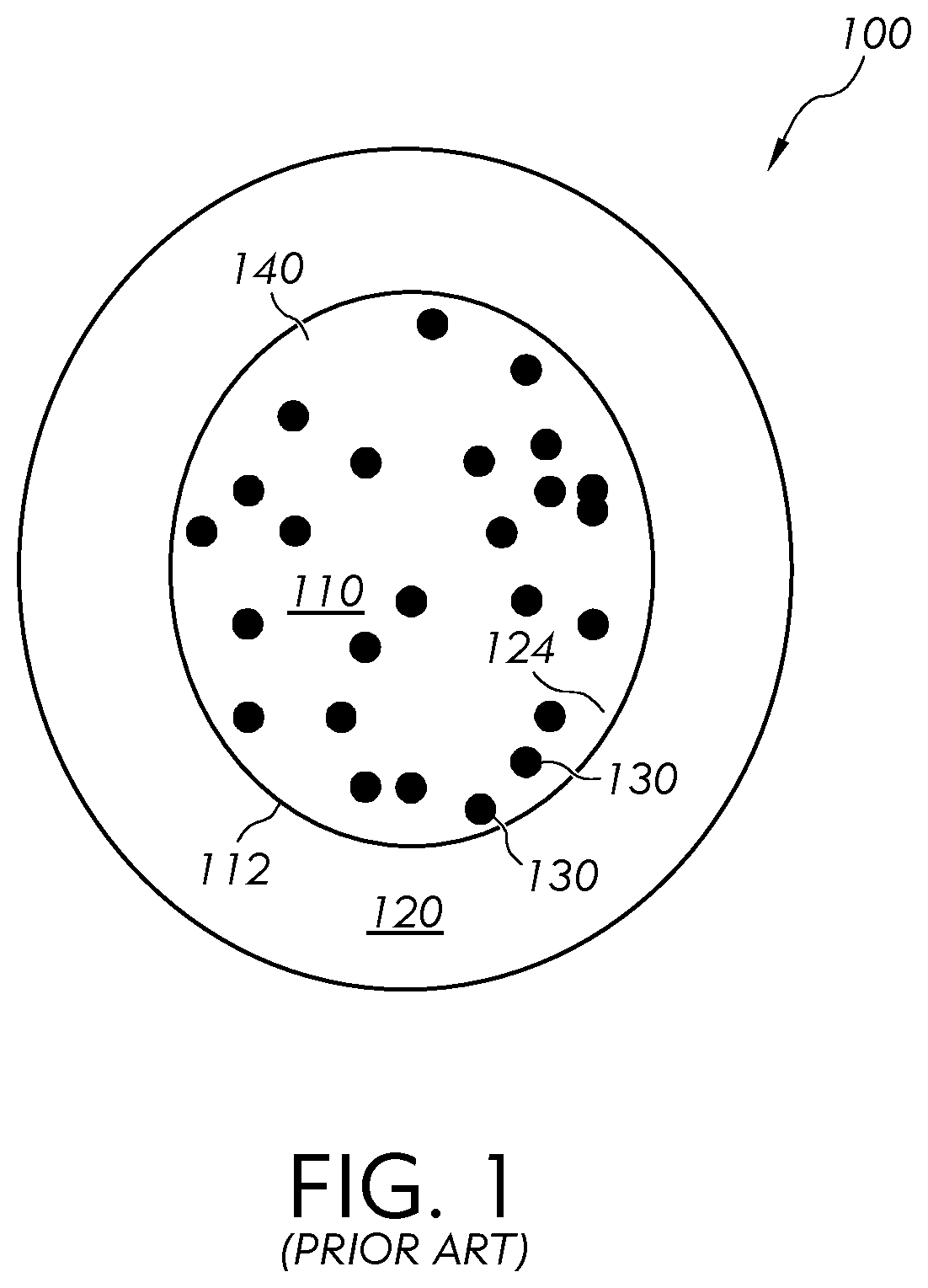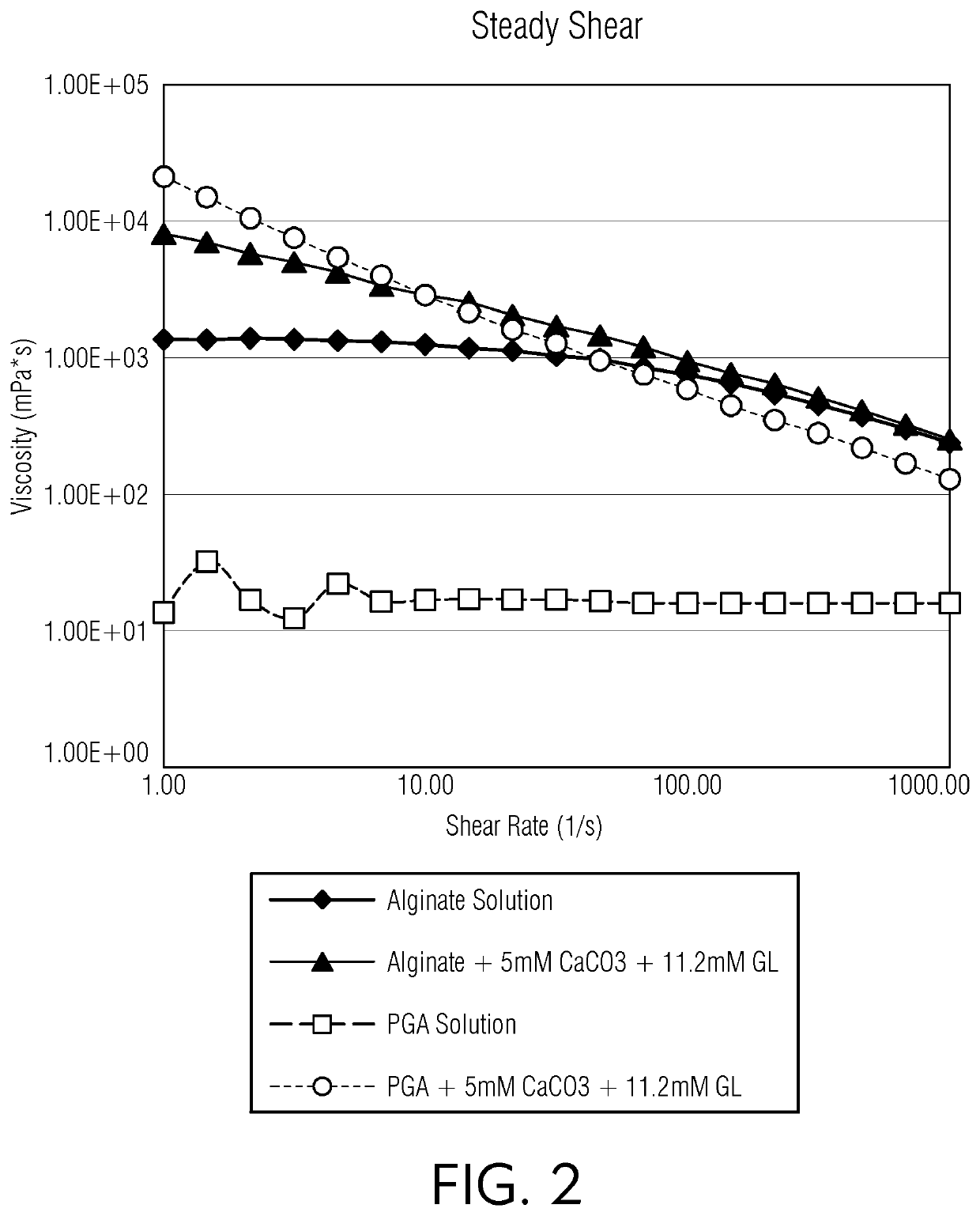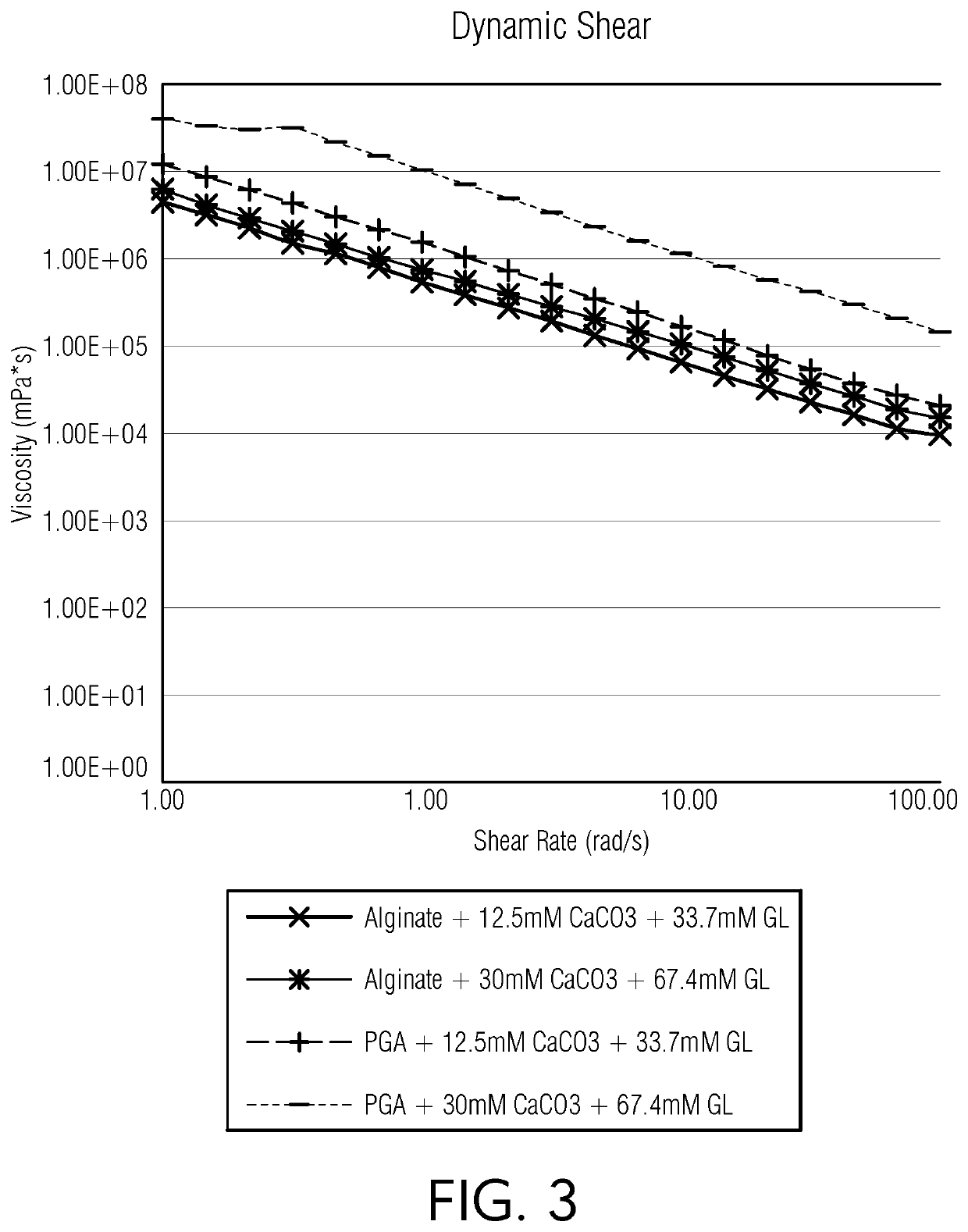A cross-linked shear thinning fluid with tunable rheology for 3D bioprinting and drug delivery
a technology of cross-linked shear thinning fluid and 3d bioprinting, which is applied in the direction of pharmaceutical active ingredients, pharmaceutical non-active ingredients, medical preparations, etc., can solve the problems of inability to control the geometry and the cellular and matrix composition of printed structures, the inability to print structures with a single molecule, and the damage to cells dispersed in such gel materials. , to achieve the effect of increasing viscosity, reducing shear and high respons
- Summary
- Abstract
- Description
- Claims
- Application Information
AI Technical Summary
Benefits of technology
Problems solved by technology
Method used
Image
Examples
example 1
Materials and Methods
[0057]To provide uniform gelation or crosslinking for a pectic acid solution, we used an internal gelation method. In this method, calcium carbonate (CaCO3) particles were dispersed into a pectic acid solution as an insoluble source for Ca2+. Freshly made glucono-delta-lactone (GDL) solution was added into the above dispersion as a source of acid. The hydrolyzation of GDL slowly generated gluconic acid which reacted with calcium carbonate particles to release Ca2+ and crosslink pectic acid molecules uniformly. All the samples were prepared 1 day before the rheology test to give enough time for the hydrolyzation of GDL and release of Ca2+.
[0058]More specifically, pectic acid sodium salt solutions were mixed with different volumes of CaCO3 suspension and freshly made GDL solution. The polymer concentrations in all the formulations were adjusted 1.6% using water. The concentrations of CaCO3 and GDL in the obtained formulations were as shown in Table 1. A sodium alg...
example 2
Results Limited Crosslinking
[0061]For formulation #1 and #2 of pectic acid and alginate polymers (Table 1), rheological properties were measured under steady shear, which is relevant during injection or extrusion during 3D printing. The obtained shear sweep results are shown in FIG. 2.
[0062]Referring to FIG. 2, the viscosity of formulation #1 of alginate solution (which contained no Ca2±) was around 1350 mPa*s at shear rate of 1 s−1 and started to reduce when shear rate was increased to higher than 10 s−1 Finally, the viscosity was reduced to 256 mPa*s at shear rate of 1000 s−1. As such, formulation #1 of alginate solution demonstrated some extent of shear thinning behavior. For formulation #2 of alginate solution, after introducing a small quantity of Ca2+ (5 mM), its viscosity increased by 6 times at a shear rate of 1 s−1 compared to formulation #1 of alginate, but continued to decrease with increased shear rate. The viscosity of formulation #2 of alginate solution, which included...
PUM
| Property | Measurement | Unit |
|---|---|---|
| Molar density | aaaaa | aaaaa |
| Molar density | aaaaa | aaaaa |
| Molar density | aaaaa | aaaaa |
Abstract
Description
Claims
Application Information
 Login to View More
Login to View More - R&D
- Intellectual Property
- Life Sciences
- Materials
- Tech Scout
- Unparalleled Data Quality
- Higher Quality Content
- 60% Fewer Hallucinations
Browse by: Latest US Patents, China's latest patents, Technical Efficacy Thesaurus, Application Domain, Technology Topic, Popular Technical Reports.
© 2025 PatSnap. All rights reserved.Legal|Privacy policy|Modern Slavery Act Transparency Statement|Sitemap|About US| Contact US: help@patsnap.com



